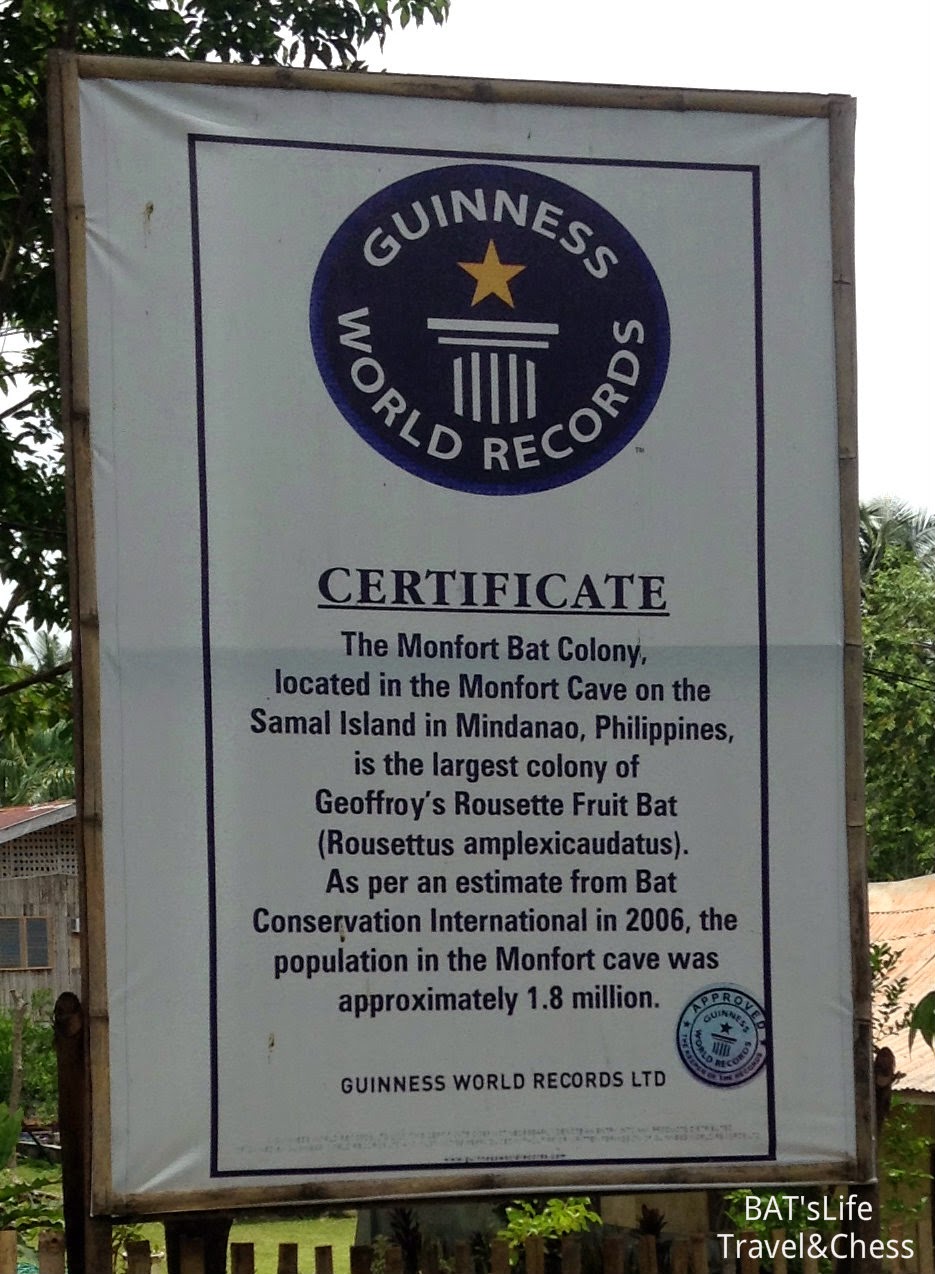Monfort Bat Colony (Samal Island)
One of the most spectacular sight in Samal Island in Mindanao is the circadian flight of around 1.8 million Geoffroy’s Rousette Fruit Bats – considered as the largest colony of such bats in the world. Monfort Bat Colony is listed in the Guinness Book of World Records.
The colony is a privately owned property and there are minimal entrance fees (Php 100.00 per person during our last visit). But for the experience, I think the fees are definitely worth it provided that it is used for the place’s improvement and conservation.
When we arrived in Samal Island, we were very excited to see this colony. We were met by its staff and explained to us some of the rudiments and exceptional characteristics of bats. The lecture, though brief, was able to cover substantial topics about bats and the various conservation efforts that are being made to preserve these creatures whose numbers are dwindling due to several factors including habitat loss. It is said that there were at least seventy (70) caves in the whole of Samal Island but at this time there are only five (5) left which all can be found at the Monfort Bat Colony.
Since we arrived at around noon, we were advised to return before sunset if we like to see the Geoffroy’s Rousette Fruit Bats getting out of their caves and flying in millions. Despite our hectic schedule on the island, we took time to return and see this circadian flight. As the sun begins to set, we knew we are about to witness an spectacle of nature replicated daily if preserved and protected but can never be experienced again once destroyed.
The experience of seeing a million bats getting out of their caves or holes at dusk is an eerie sight. It is like Halloween unfolding at your very eyes. The bats would fly in circles as if following a flight protocol before leaving to find food, to mate or do whatever they please. The bats appear to know where they are headed and fly without any form of hesitation nor bumping with one another – a demonstration of what is called as “echolocation” according to the caretaker.
We observed the phenomenon and it is one that everyone should at least see in a lifetime. This spectacle may no longer be around in the future given the rapid development of islands in the Philippines. Samal Island is of no exception. During our visit, we can see that the plague of urbanization is slowly afflicting the island- new roads are being constructed reaching areas as far as Pearl Farm Resort. While there is nothing wrong in development essentially, efforts have to be made to ensure that natural resources are protected and preserved which is not in most cases.
When we travel, it seems that the whole exercise is a race against time. It is a race to see places before they succumb to the perils of development. I often ask how long can these bats survive in such great numbers in Samal Island? These creatures cannot be kept in a cage or in a zoo. Their habitat is far reaching and perhaps covers the whole island of Samal. To preserve these bats the whole island of Samal and its natural habitat has to be protected which is definitely a Herculean if not an impossible task.
These fruit bats play a vital role in Samal’s ecosystem and perhaps in the whole ecosystem of the world if we think of how everything is naturally interconnected. The bats are known to feed on fruits where they help to propagate seeds by dispersing them in various locations. In this manner, it can be said that the famous Durian of Davao are dependent on these bats for their survival and reproduction.
The holes or caves in the Monfort Bat Colony are subject to some sort of a strict “caste system”. In these caves, younger males, females, mothers caring for their young, older and dominant bats segregate themselves occupying a particular cave. This “caste system” is being followed religiously apparently as we saw an organized system of living in each cave in the chaotic world of the bats.
The smell of “guano” or bat droppings is very difficult to bear and is something one has to survive when visiting the Monfort Bat Colony. Awful smell is all over the place and it varies in different degrees depending on the cave. Covering your nose when visiting the colony is of little help.
But despite the smell, Monfort Bat Colony is a very interesting and fascinating place to visit in Samal Island. Aside from beach resorts, the island has just earned bragging rights in having the largest colony of such bats in the world. Again, seeing these bats in great numbers seem to be a battle against time. There is absolutely no assurance that this spectacle would still be there in the coming years. You got to see it while its there...





Comments